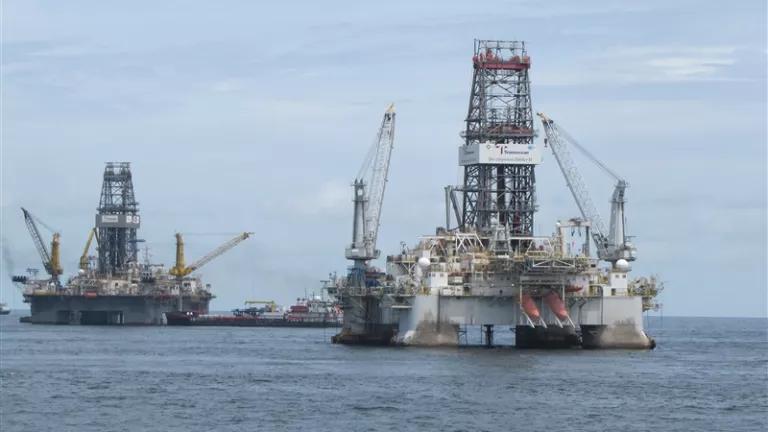Protect Our Ocean, and in Turn, It Protects Us
To heal our ocean and allow its continued use for food, jobs, and recreation, we must end our fossil fuel addiction.

Channel Islands kelp forest
National Park Service/ Brett Seymour
Standing at the shoreline, the ocean looks vast and blue, constant and capable of absorbing anything thrown its way. But the reality is different.
Today’s IPCC Special Report on the Ocean and Cryosphere in a Changing Climate details ocean changes we’ve caused by burning fossil fuels. Carbon dioxide given off by industry and cars has made the ocean more acidic, making it harder for shellfish to grow their protective shells. Climate change is warming the ocean, killing coral reefs and driving ocean animals to seek cooler waters.
Millions of terrestrial and ocean species worldwide are at risk of extinction because of human activity—many within our lifetimes. In the ocean, climate change isn’t even a leading cause of these likely losses yet: years of chronic overfishing, pollution, and habitat destruction have strip-mined the ocean. More than one-third of marine mammals and nearly one-third of sharks, shark relatives, and reef-forming corals are threatened with extinction.
Things look bad for our ocean, but it’s not too late. We can create a better, healthier future for the ocean – and ourselves. To heal our ocean and allow its continued use for food, jobs, and recreation we must end our fossil fuel addiction and provide safe havens where ocean wildlife can thrive.
To turn the tide of ocean extinction and reinforce our defenses against climate change, scientists recommend we protect at least 30 percent of the ocean by 2030 (“30X30”). This approach offers an economic value estimated in the billions of dollars and benefits communities with deep ocean ties and the places and animals we love and need. We can do this by:
- Conserving a range of coastal wetlands, seagrass beds, and mangrove forests to protect nearby homes and businesses from sea level rise and storms, establish safe havens for wildlife and nursery areas for fish populations, and maintain these habitats as vital storage units for capturing and holding carbon dioxide.
- Protecting special ocean areas critical for wildlife feeding, breeding, and migrating. Prohibiting extractive uses in these areas will allow at-risk sea life to recover, and give these marine areas a leg up in the fight against climate change. Creating a network of protected ocean areas allows for bigger and more abundant sea life and allows animals a series of safe stepping stones as populations shift to escape warming waters.
Working together we can shape another, better future where we protect our ocean—and, in turn, it protects us.

Seastar wrapped on a vibrant Bear Seamount coral. NOAA, Deep Connections 2019.



